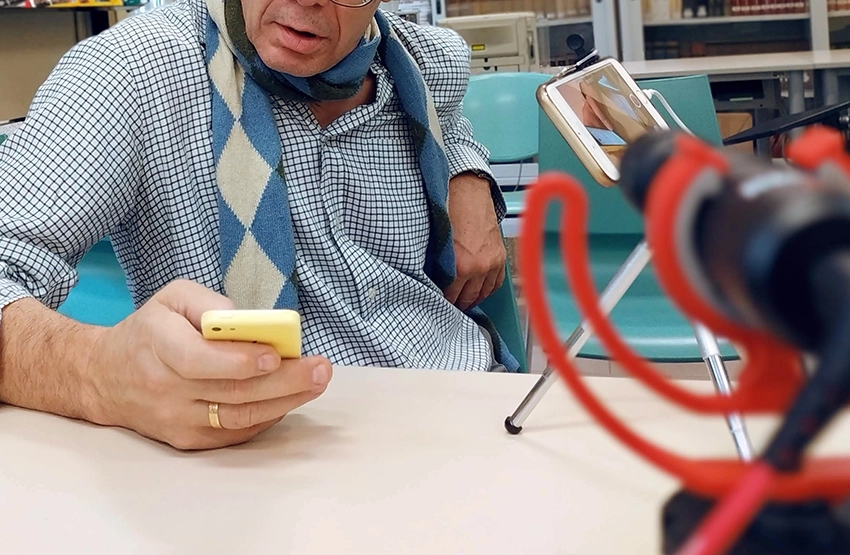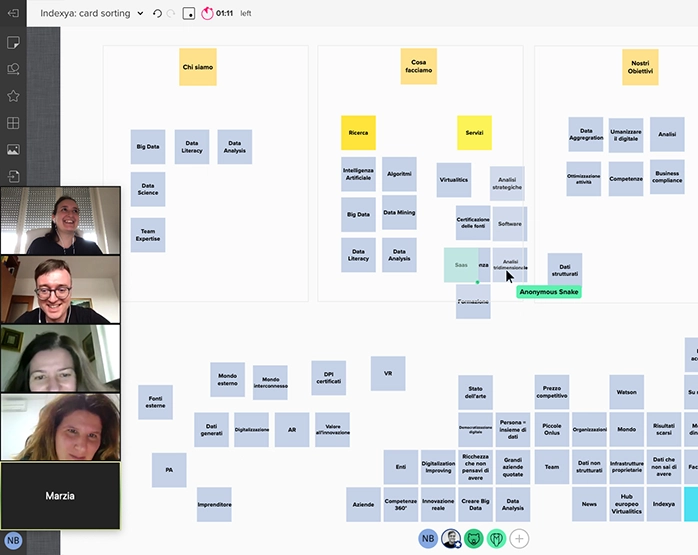
Etichetta di comportamento per moderare un test di Usabilità
- User Research
- Usability Testing
1. Sii gentile
Dai il benvenuto ai partecipanti, presentati, chiedi di ripetere i propri nomi e ringraziali per la partecipazione.
2. Rompi il ghiaccio
Spiega la metodologia di testing, specifica che non vuoi testare le abilità dei partecipanti ma che stai conducendo una ricerca per valutare il prodotto.
Inizia con una breve intervista per comprendere le abitudini dei tuoi interlocutori e la loro familiarità con il prodotto o servizio da testare.
3. Evita eventi inaspettati e distrazioni
Verifica il funzionamento del prototipo e testa il manuale di test con pochi utenti prima di iniziare la campagna vera e propria.
Chiedi di silenziare le notifiche prima di iniziare la sessione di test.
4. Sii onesto
Informa il tester dell’eventuale registrazione della sessione e richiedi i consensi prima di procedere con il test.
5. Evita pregiudizi
Non testare il prodotto che hai progettato, fallo testare ad altri ricercatori.
Non ingaggiare persone troppo esperte di testing o che hanno già avuto esperienza con il prodotto oggetto di test.
6. Incoraggia il giudizio critico
Dichiara di non essere il designer del prodotto. Richiedi la massima apertura e sincerità dall’utente.
Non assumere una posizione di superiorità rispetto all’interlocutore e non biasimarlo per la sua inesperienza.
Non affollare la sessione con osservatori non necessari.
7. Non influenzare il tester
Sii il più possibile invisibile, non suggerire azioni.
Non giudicare le preferenze e opinioni del tester.
Evita di raccontare la tua opinione o esperienza personale, a meno che non serva a far comprendere meglio al tester il task da compiere.
8. Non richiedere un impegno eccessivo
Chiedi di eseguire un task alla volta. Non eccedere nei tempi e nel numero di Use Case da eseguire.
9. Approfondisci
Prima osserva, poi fai le domande: devi distinguere tra problemi di usabilità e bias dell’utente.
English Version
1. Be gentle
Welcome the participants, introduce yourself, ask for confirmation of their name and thank them for their participation.
2. Break the ice
Explain the testing methodology, specify that you’re not going to test the participants but you’re conducting a research to evaluate the product.
Start with a short interview to understand your interlocutors habits and their familiarity with the product or service being tested.
3. Avoid unexpected events and distractions
Check the prototype and the test manual with a smaller sample of users before starting the test campaign.
Ask to silence notifications before starting the testing session.
4. Be honest
Inform the tester about the recording and request consent to proceed.
5. Avoid bias
Do not test your own product, let other researchers do it.
Do not recruit people who are too experienced in testing. Do not recruit people who already had experience with the same product.
6. Encourage criticism
Declare that you are not the designer of the product. Require maximum openness and sincerity from the user.
Do not assume a position of superiority over the interlocutor and don’t blame him for being inexperienced.
Don't crowd the session with unnecessary observers.
7. Do not influence the tester
Be as invisible as possible, do not suggest actions.
Don't judge the tester preferences and opinions.
Avoid telling your own experience or opinion, unless needed to put the tester at ease and make him better understand the task to be carried out.
8. Don't require an excessive effort
Propose one task at a time. Do not exceed the timing and the number of use cases.
9. Learn more
Observe first, then ask why. You must distinguish usability problems from user bias.




